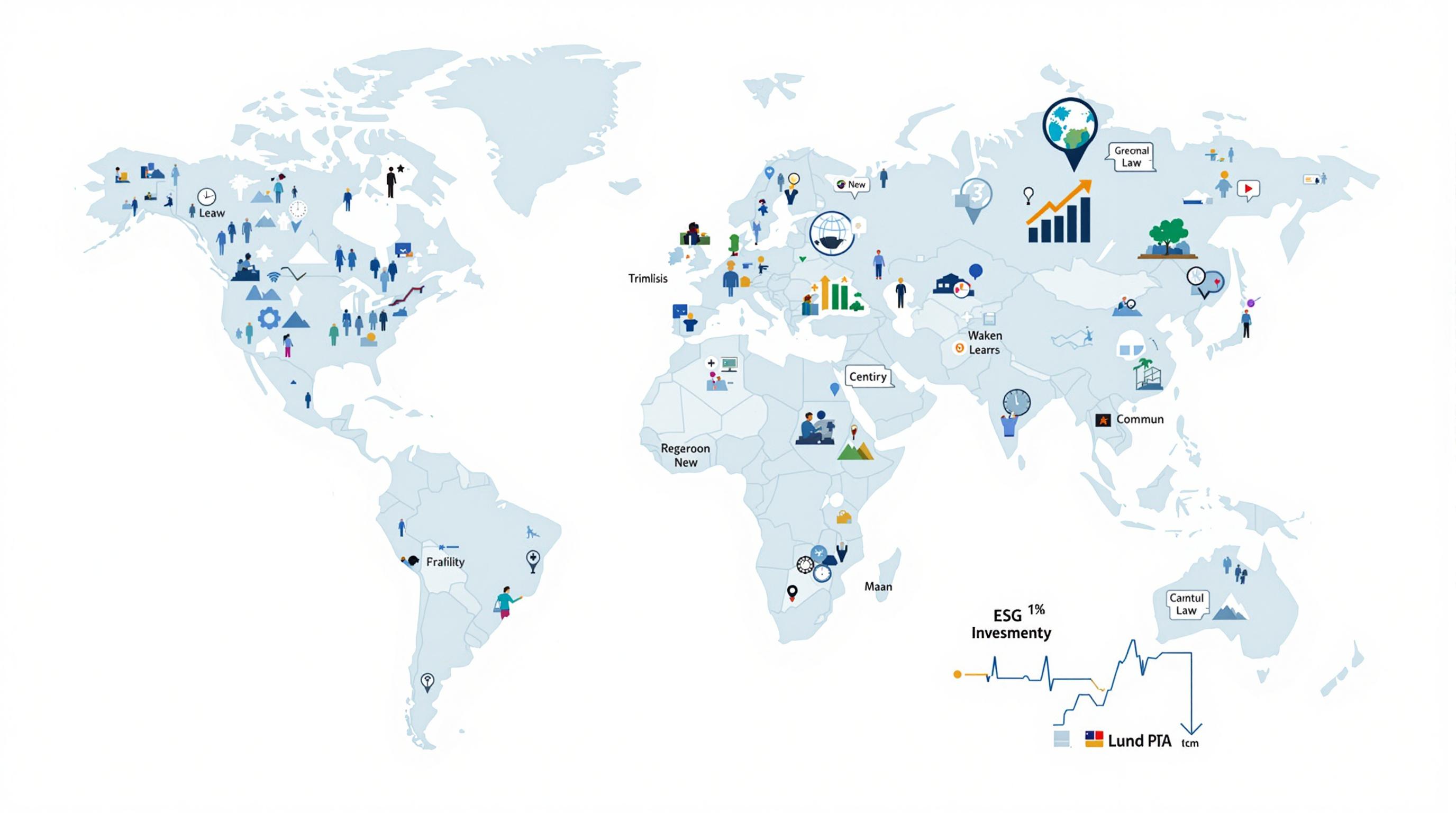Related Articles
- How Climate Change Litigation Is Reshaping International Investment Risk Assessment and Capital Flows
- 7 Revolutionary Smart Home Investments from the Last Five Years That Generate Steady Passive Income in 2024
- How Virtual Reality Is Changing Family Conversations About Inheritance and Future Financial Transparency
- The Influence of Seasonal Affective Disorder on Designing Adaptive Support Networks for Mental Wellness
- Top 5 Game-Changing Green Bonds Released Since 2019 Disrupting Conventional Sustainable Finance Models
- 6 Groundbreaking Global Robo-Advisors Unveiled Since 2019 Transforming Automated Wealth Management
6 Lesser-Known ESG Metrics That Could Redefine Your Portfolio’s Long-Term Resilience and Profitability
6 Lesser-Known ESG Metrics That Could Redefine Your Portfolio’s Long-Term Resilience and Profitability
6 Lesser-Known ESG Metrics That Could Redefine Your Portfolio’s Long-Term Resilience and Profitability
Introduction: Beyond Traditional ESG Metrics
Environmental, Social, and Governance (ESG) investing has emerged as a critical framework for evaluating corporate sustainability and ethical impact. Traditional metrics such as carbon emissions, board diversity, and labor practices dominate the landscape, often guiding investors toward more conscientious decisions.
However, as markets evolve, so do the metrics that capture the nuanced realities of corporate responsibility. Less mainstream ESG indicators are beginning to surface, offering deeper insights into a company’s long-term resilience and profitability potential.
By integrating these lesser-known metrics, investors can enhance portfolio robustness against emerging risks while capitalizing on opportunities that conventional ESG frameworks might overlook.
1. Resource Circularity Rate
Resource circularity measures how effectively a company reuses and recycles materials within its production processes to minimize raw material consumption. Unlike traditional waste management stats, this metric captures the extent of closing the loop in material usage.
Companies with high resource circularity demonstrate advanced sustainable innovation and tend to be less exposed to supply chain disruptions and commodity price fluctuations. This promises longer-term cost savings and reduced environmental impact.
For investors, resource circularity offers a proxy for operational efficiency and anticipates regulatory trends favoring circular economy principles, positioning portfolios to benefit from the shift toward sustainable resource management.
2. Biodiversity Impact Score
Biodiversity Impact Scores assess how corporate activities affect local ecosystems, species diversity, and habitat integrity. Most ESG frameworks emphasize emissions and pollution but often overlook ecological complexity and species interdependence.
Firms that actively mitigate biodiversity loss reduce risks related to ecosystem service decline, such as water purification and soil fertility, which can indirectly affect productivity and supply chains. Investors attentive to biodiversity impact gain foresight into environmental liabilities and reputational risks.
Organizations like the Science Based Targets for Nature initiative provide guidance on quantifying and reporting biodiversity impact, fostering transparency and comparability across sectors (SBTN, 2023).
3. Data Privacy & Algorithmic Fairness
As digital transformation accelerates, data privacy and algorithmic fairness are critical yet underappreciated ESG dimensions, especially within technology and financial sectors. This metric evaluates the ethical handling of consumer data and biases in AI systems.
Companies with rigorous data governance and fairness protocols mitigate risks of regulatory penalties, public backlash, and operational disruptions. Moreover, they foster consumer trust and employee morale, key intangible assets for long-term success.
Investors integrating data ethics metrics can identify firms better adapted to the digital society’s evolving norms, securing competitive advantage while promoting social good (World Economic Forum, 2022).
4. Supply Chain Transparency Index
Supply chain transparency quantifies a company’s ability to monitor and disclose the environmental and social conditions within its suppliers’ operations. While ESG assessments often focus on direct operations, upstream and downstream activities carry significant risk exposures.
A high transparency index implies robust supplier audits, traceability mechanisms, and engagement in capacity building. This reduces risks of supply disruptions, regulatory fines, and reputational damage from labor abuses or environmental harm.
For investors, supply chain transparency serves as an early warning system and a measure of corporate accountability, contributing to portfolio stability amid globalized trade complexities.
5. Employee Well-Being & Mental Health Support
Employee well-being extends beyond workplace safety to encompass mental health initiatives, work-life balance programs, and overall job satisfaction. Despite growing awareness, formalized measurement remains sparse in conventional ESG reporting.
Companies prioritizing mental health support see gains in productivity, reduced absenteeism, and lower turnover rates. These outcomes translate into operational continuity and talent retention—pillars of resilient business models.
Investors focused on this metric can tap into corporate cultures that drive innovation and adaptability, enhancing the ability to withstand economic and social shocks over time.
6. Climate Transition Readiness
Climate transition readiness measures how prepared companies are to shift from fossil-fuel dependence to low-carbon operations, encompassing strategy articulation, investment in renewables, and scenario planning.
Unlike static emissions data, readiness indicates the trajectory of a company’s future performance under tightening climate policies and market expectations. Firms excelling in transition readiness often anticipate regulatory changes and emerging business models.
For investors, incorporating transition readiness enables portfolio alignment with global climate goals, potentially avoiding stranded assets and unlocking growth in green sectors (IPCC, 2023).
Conclusion: Embracing Evolving ESG Paradigms
The six lesser-known ESG metrics outlined here illuminate pathways to more comprehensive and forward-looking investment analysis. Incorporating resource circularity, biodiversity impact, data ethics, supply chain transparency, employee well-being, and climate transition readiness empowers investors to uncover hidden value and risk.
As sustainability challenges intensify and stakeholders demand deeper accountability, these nuanced ESG indicators will likely become integral to assessing corporate resilience and profitability. Forward-thinking investors who adopt these measures early stand to shape more sustainable and rewarding portfolios.
Embracing evolving ESG paradigms transcends compliance—it fosters a holistic approach to value creation that is attuned to the complex realities of a rapidly changing global landscape.
References
Science Based Targets for Nature (SBTN). (2023). Guidance on Biodiversity Impact Assessment.
World Economic Forum. (2022). Responsible Use of Technology: Data Privacy and Algorithmic Fairness.
Intergovernmental Panel on Climate Change (IPCC). (2023). Climate Change 2023: Mitigation of Climate Change.




